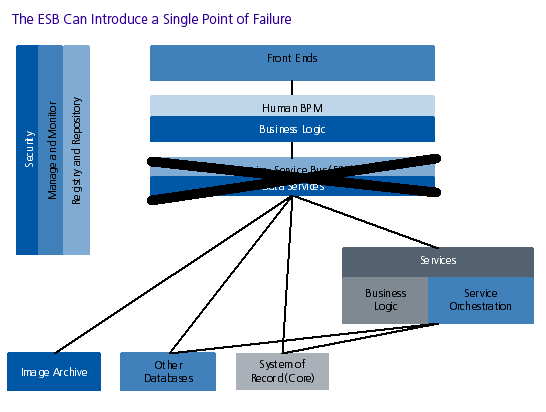To ESB or Not to ESB?
Abstract
It is generally assumed that a service-oriented architecture (SOA) will have an enterprise service bus (ESB). Celent questions that basic assumption.
In a new report, To ESB or Not to ESB, Celent questions the baseline assumption that an enterprise service bus (ESB) is required for SOA. The vast majority of large banks have an ESB and there are many benefits that accrue to installing an ESB.
What isn’t as broadly discussed are the downsides of using an ESB and the other options available that are likely to be faster, less expensive, and perhaps no less flexible. The ESB also introduces a single point of failure (as shown below in Figure 1), processing overhead, and more complex audit trails.

Bart Narter, Senior Vice President of the Banking Group and author of the report states, “While the knee-jerk assumption is that to do SOA, a bank needs an ESB, it is possible that a bank could get more value from the SOA by not having one.” He continues, “However, working without an ESB requires a greater amount of discipline and coordination across the organization.”
A Japanese version of the report is also available.

